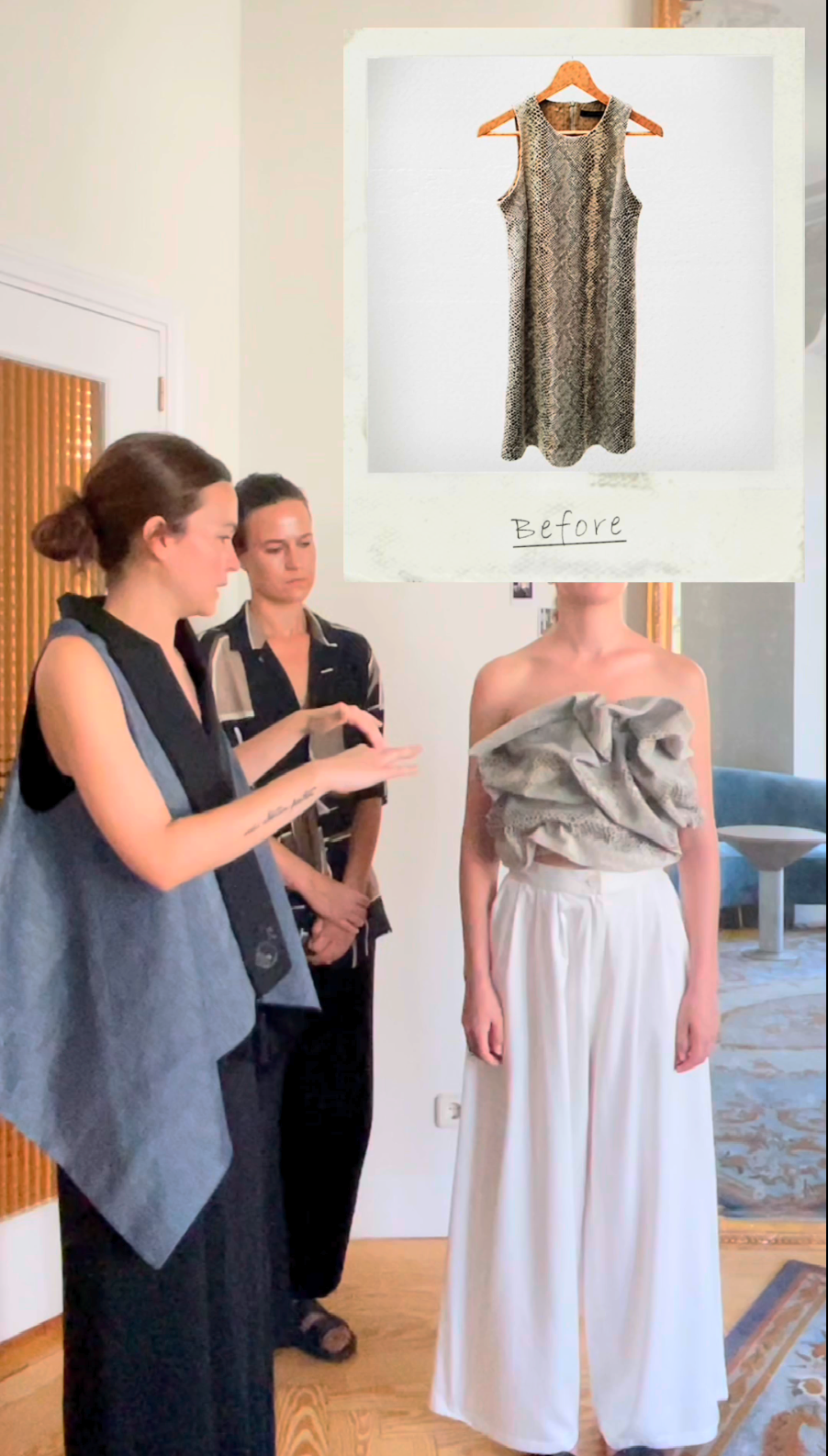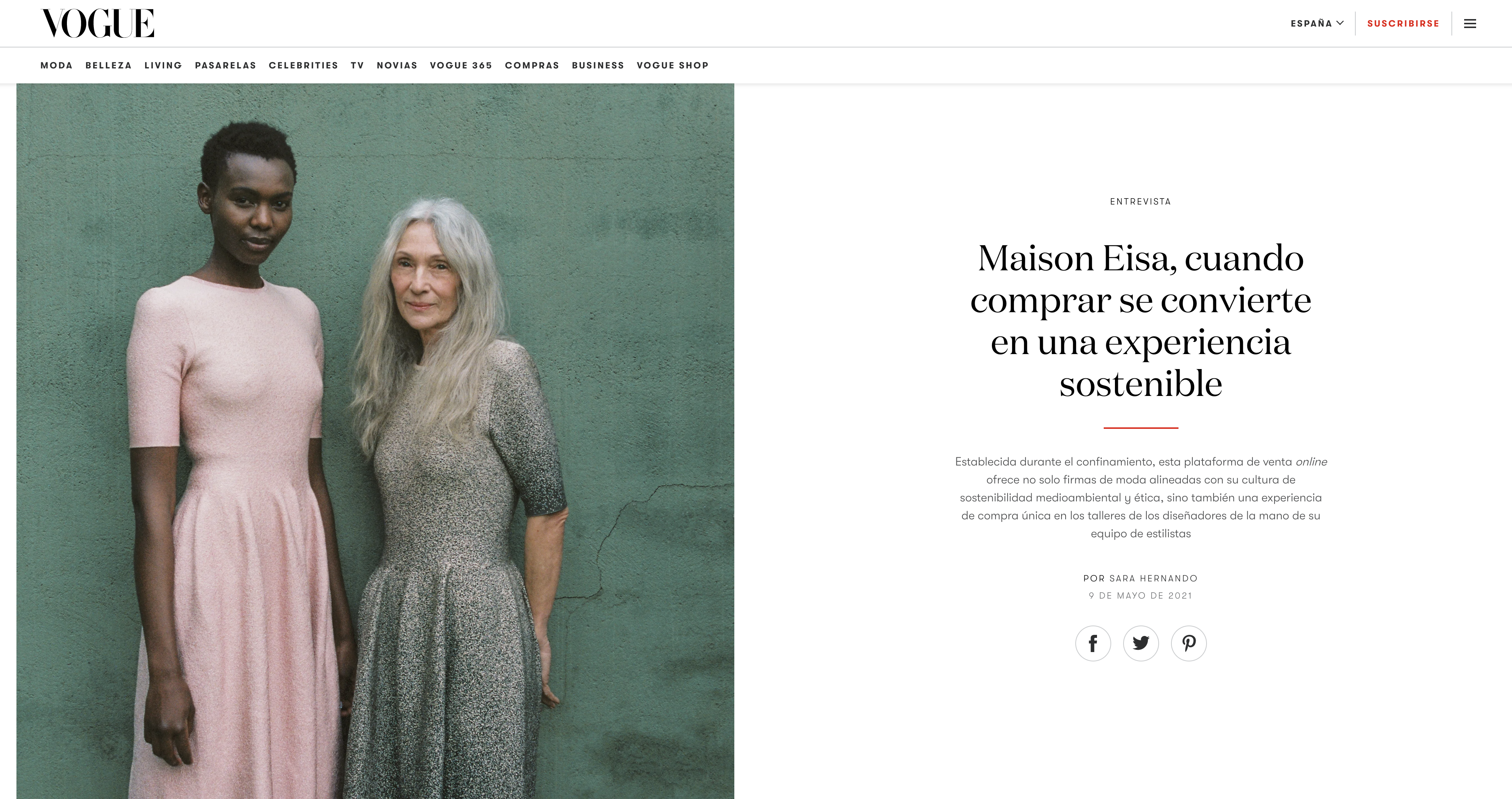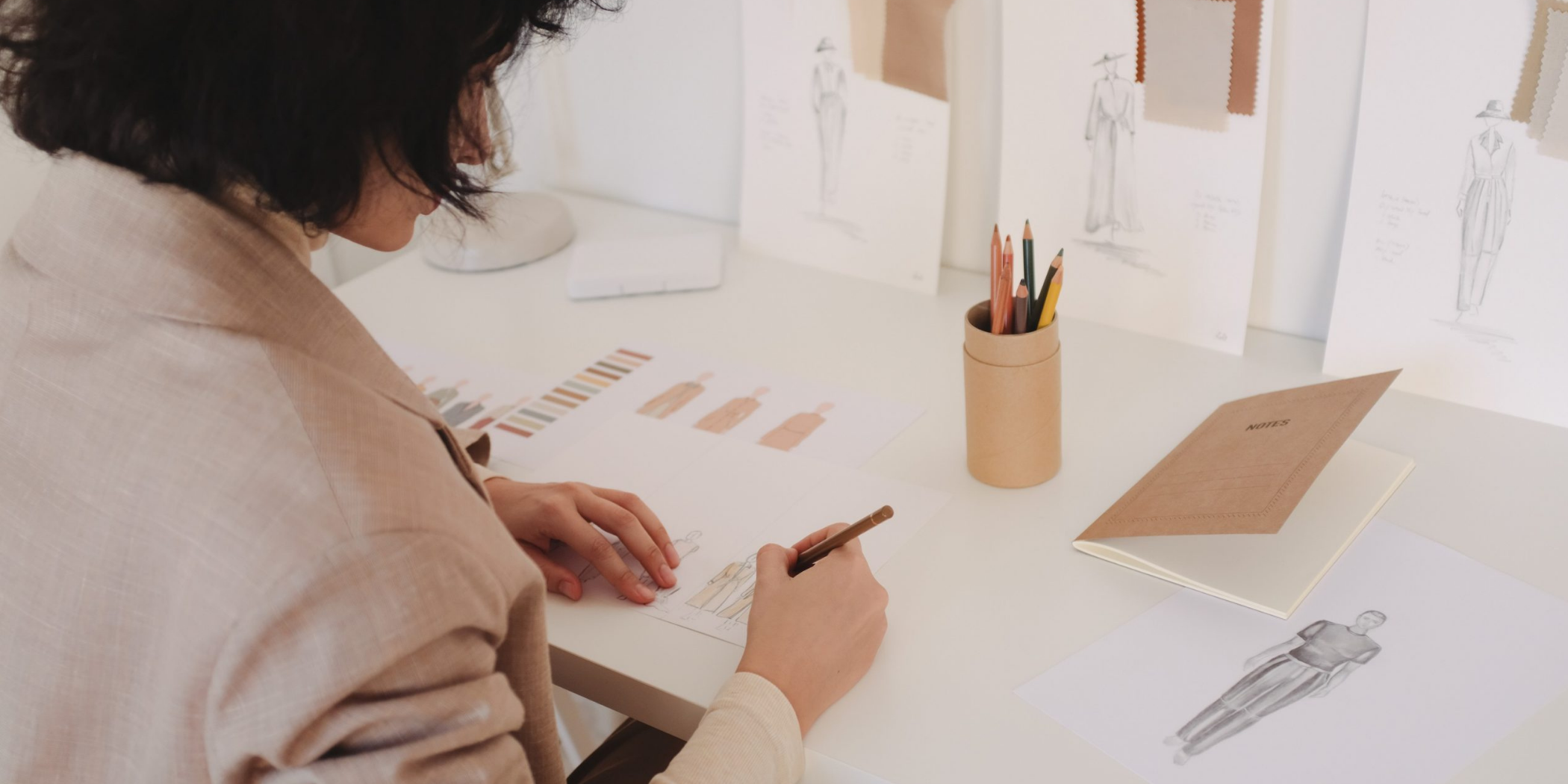
Sidikai: Sustainability and sophistication
How was Sidikai born?
Carlota: “Sidikai was born from the beginning with a clear objective, which was to use fashion as a vehicle to contribute to solve environmental problems or of social justice; to use the collections that we were going to make with the idea of putting attention on a problem and try to solve it from our little place”.
Mariana: “Yes, in the end fashion for us is the vehicle through which we channel creativity to generate the maximum possible positive impact; that was the goal from the beginning”.
How has the project evolved since you started from the point of view of your focus on sustainability?
Carlota: “We started around 2015/2016 and since then the world has changed a lot! When we started talking about sustainability and sophistication in fashion, it was something that nobody understood. We did not have the amount of information that we have today regarding the impact of fashion, on the environment and on the people who work behind scenes, but fortunately there has been a great change and all of this is beginning to become a movement that has strength”.
How and when did you start upcycling?
Carlota: “What we have done from the beginning, is to take into account waste; because of the way that we work and think, we see waste as an error in the design. In our collections we have always tried to be zero waste, and if not try to approach it in a way in which waste is minimized. We have worked a lot on the value chain, but in the end we always had the last fringe of the end of the garment's life and that is how Itero was born, which is our upcycling line ”.
Mariana: “In the end for us, what happened is that as we have worked a lot from the beginning, as Carlota said, in the entire value chain, we realized that there comes a point where, no matter how sustainable the product you are making is, the moment you release it into the world it is a potential waste. Whether it is a Zara t-shirt or any of our garments. In the end, when you as a designer realize that; that each piece that you are releasing to the world is a potential waste, waste takes a completely different dimension. Our goal, having as our core value to have a positive impact, is to say, well, we are not going to consider waste as garbage but instead we are going to take it as an opportunity and in this case as raw material to generate new pieces. This way we close that circle, we build a circular economy, by generating new parts using parts that already exist ”.
Can you show us some of the pieces from Itero and tell us a bit about their story?
Carlota: “In the end, the designer always starts from a blank page, and that is why upcycling is so interesting because it starts with many existing conditions that lead you to the final piece. The first step in our process is to choose the garments that we are going to recycle and from there we begin to unravel it and see its structure and the pieces it has. Once we have a good understanding of this, the redesign process begins. This process takes into account the fabric, the history of the initial garment, its design, everything; depending on the initial piece, we can either keep the design to maintain a bit of its history and the vibe of the initial garment, or on the contrary, do something totally different. In this case we have done a completely different thing; It was a short, straight, A-line, sleeveless dress and from there we created the structure and put all the volume on it, so that in the end it became a strapless top with this explosion of texture on the front”.
Mariana: “With itero what we try to achieve is as we said before, to consider waste as a raw material, and we do it in a quite innovative way, by taking a garment and transforming them completely. We alter the classic design process that is to face that blank sheet that we were referring to, and instead face a piece that already exists, that has its life, that has its use and that has its own design. And with that we take advantage of everything, that is, we do not generate any waste, and we transform it into a new piece that of course has the Sidikai style, which is also what we are looking for ”.
Carlota: “We also apply upcycling to our own collections, to any deadstock or any piece that we cannot sell for some reason, we try to give it a second life. For instance with some of the silk scarves from the previous collection,“ Fixed Air ”we have made these bodies. These tops are made from two scarves from the previous collection; we are also using them to experiment with natural dyes”.
--
Tuvimos el placer de que las fundadoras de Sidikai, Carlota y Mariana Gramunt nos viniesen a ver a nuestro espacio para hablar sobre sostenibilidad, contarnos su historia y enseñarnos algunas de las piezas de su nueva colección, Itero.
¿Cómo nace Sidikai?
Carlota: “Sidikai nació ya desde el principio con un objetivo claro que era utilizar la moda como vehículo para aportar nuestro granito de arena para solucionar problemas medioambientales o de justicia social, un poco para utilizar las colecciones que íbamos a hacer con la idea de poner el foco en algún problema e intentar solucionarlo desde nuestro pequeño lugar”.
Mariana: “Sí, la moda al final para nosotras es el vehículo a través del cual canalizamos la creatividad para generar el máximo impacto positivo posible; ese es un poco el objetivo desde el principio”.
¿Cómo ha evolucionado el proyecto desde que empezasteis desde el punto de vista de vuestro enfoque en la sostenibilidad?
Carlota: “Empezamos hacia 2015/2016 y desde entonces ¡el mundo ha cambiado bastante! Cuando empezamos hablar de sostenibilidad y sofisticación en la moda era algo que nadie entendía. No existía la cantidad de información que tenemos hoy en día en cuanto al impacto de la moda, en el medio ambiente y en las personas que trabajan detrás, pero bueno gracias a Dios ha habido un gran cambio y ya todo esto empieza a ser un movimiento que tiene fuerza”.
¿Cuándo y cómo empezasteis con el upcycling?
Carlota: “Lo que sí hemos tenido desde el principio es tener en cuenta el desperdicio, porque para nosotras por nuestra forma de trabajar, el desperdicio es un error de diseño. En nuestras colecciones hemos intentado siempre que sean cero waste, y si no intentar enfocarlo de la forma en la que el desperdicio se minimizase. Hemos trabajado mucho la cadena de valor, pero al final siempre teníamos el fleco último del final de la vida de las prendas y ahí es desde donde nace Itero, que es nuestra línea de upcycling”.
Mariana: “Al final para nosotras, lo que ocurre es que hemos trabajado mucho desde el principio, como decía Carlota, toda la cadena de valor, y nos dimos cuenta que llega un punto en el que por muy sostenible que sea el producto que estás haciendo, en el momento en el que lo lanzas al mundo es un potencial desperdicio. Ya sea una camiseta de Zara o cualquiera de nuestras prendas, y eso al final cuando tu como diseñador asumes eso, que, cada pieza que estás liberando al mundo es un potencial desperdicio, el desperdicio toma otra dimensión totalmente distinta, y nuestro objetivo, al tener el impacto positivo en el centro, es decir bueno, el desperdicio no vamos a considerarlo como basura sino que vamos a tomarlo como una oportunidad y en este caso como materia prima para poder generar piezas nuevas y realmente sí que cerrar ese círculo, que al final es la economía circular, a través del cual estamos generando piezas nuevas utilizando piezas que ya existen”.
¿Podéis contarnos un poco sobre alguna pieza de vuestra colección Itero?
Carlota: “Al final el diseñador parte siempre de una página en blanco, de un diseño que no tiene ningún condicionante, y por eso el upcycling es tan interesante porque partes de muchos condicionantes que te van llevando hacia la pieza final. Nosotros el primer paso es bueno, elegir las prendas que vamos a reciclar y a partir de ahí empezamos a descoserlo y ver las piezas que tiene, y ya teniendo muy claro como son las piezas, empieza el proceso de rediseño. En ese proceso se tiene en cuenta desde el tejido hasta la propia historia de la prenda inicial; depende de la prenda que tenemos de inicio, podemos mantener un poco el diseño para mantener la historia y el aire de la prenda inicial, o todo lo contrario, hacer algo totalmente diferente. En este caso hemos hecho una cosa totalmente diferente; era un vestido corto, recto, línea A, sin mangas y de ahí creamos la estructura y le pusimos todo el volumen, para que al final quede un top palabra de honor con esta explosión de textura por delante”.
Mariana: “Con itero lo que intentamos conseguir es lo que decíamos antes, considerar el desperdicio como materia prima, y lo hacemos de una forma bastante innovadora cogiendo las prendas y transformándolas completamente. Alteramos el proceso de diseño clásico que es enfrentarse a esa hoja en blanco que decíamos, y lo que hacemos es enfrentarnos a una pieza que ya existe, que tiene su vida, que tiene su uso y que tiene su corte. Y con eso aprovechamos todo, es decir no generamos ningún desperdicio, y además lo transformamos en una pieza nueva que evidentemente tiene el estilo Sidikai que también es lo que buscamos”.
Carlota: “El upcycling también lo aplicamos a nuestras propias colecciones, a algún resto o alguna pieza que no podamos vender por alguna razón, intentamos darle una segunda vida y con alguno de los pañuelos de la colección anterior, “Fixed Air” hemos hecho estos cuerpos. Estos tops llevan dos pañuelos de la colección anterior y además los estamos utilizando para experimentar con tintes naturales”.


